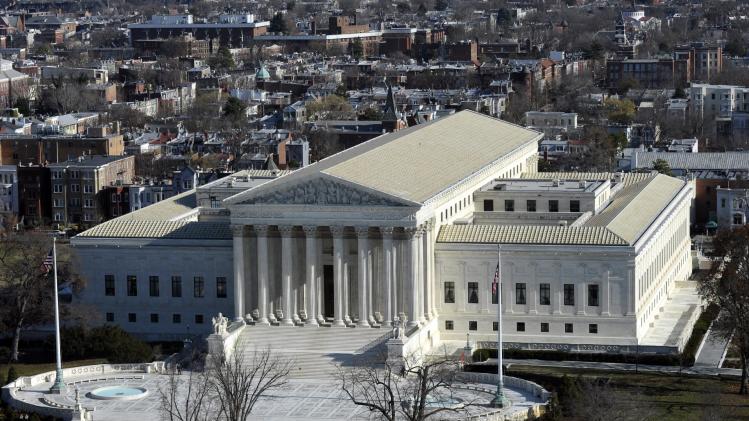Court weighs president's recess appointments power

WASHINGTON (AP) — The Supreme Court is refereeing a politically charged dispute between President Barack Obama and Senate Republicans over the president's power to temporarily fill high-level positions.
The case being argued at the high court Monday is the first in the nation's history to consider the meaning of the provision of the Constitution that allows the president to make temporary appointments to positions that otherwise require Senate confirmation, but only when the Senate is in recess.
The court battle is an outgrowth of increasing partisanship and the political stalemate that's been a hallmark of Washington for years, and especially since Obama took office in 2009.
Senate Republicans' refusal to allow votes for nominees to the National Labor Relations Board and the new Consumer Financial Protection Bureau led Obama to make the temporary, or recess, appointments in January 2012.
Three federal appeals courts have said Obama overstepped his authority because the Senate was not in recess when he acted.
The Supreme Court case involves a dispute between a Washington state bottling company and a local Teamsters union in which the NLRB sided with the union. The U.S. Court of Appeals for the District of Columbia Circuit overturned the board's ruling. Hundreds more NLRB rulings could be voided if the Supreme Court upholds the appeals court decision.
More broadly, if the justices ratify the lower court ruling, it would make it nearly impossible for a president to use the recess power. Under such a ruling, presidential nominees could be blocked indefinitely when the president's party does not control the Senate.
Three federal appeals courts have upheld recess appointments in previous administrations.
Senate Republicans also are taking part in the case, in support of the company, Noel Canning.
The impasse over confirming nominees to the NLRB and the CFPB was resolved last summer, and majority Democrats have since changed Senate rules to limit the ability of the minority party to block most presidential nominees.
A few hours after the court hears the case Monday, the Senate is scheduled to vote on the nomination of Robert Wilkins, currently a federal trial judge, to serve on the federal appeals court in the District of Columbia.
Senate Democrats changed the rules over fierce Republican opposition after the GOP had blocked the nomination of Wilkins and two others to the appeals court.
While situations like the one that led to the current court case are unlikely to arise in the short term, a Republican takeover of the Senate after the November elections could prompt a new round of stalled nominations, said John Elwood, a Washington lawyer who served in the Justice Department during the Bush administration and has written extensively about recess appointments. "We may be back where we were before," Elwood said.
The justices will be considering two broad questions and a narrower one as well.
The big issues are whether recess appointments can be made only during the once-a-year break between sessions of Congress and whether the vacancy must occur while the Senate is away in order to be filled during the same break.
Solicitor General Donald Verrilli Jr. told the court that 14 presidents have temporarily installed 600 civilians and thousands of military officers in positions that were vacant when the Senate went into recess at any point, a practice that has been well understood by both presidents and lawmakers. A high court ruling that a recess only happens once a year would "dramatically upset that long-settled equilibrium," Verrilli said.
The narrower issue is whether brief, pro forma sessions of the Senate, held every few days to break up a longer Senate hiatus, can prevent the president from making recess appointments. That's what the Senate did, at Republicans' insistence, during the time when Obama acted.
Senate Republicans say the answer is easy.
"Who determines — the Senate, or the president — whether the Senate is in session? The Constitution's text and structure point to only one answer: the Senate," the Republicans said in court papers.
But Verrilli said the Senate made clear in voting for the pro forma sessions that no business would be conducted and that, in essence, the Senate would be in recess. "The president took the Senate at its word. And rightly so," he said.
The parties' roles were reversed when a Republican president, George W. Bush, was in the White House and Democrats controlled the Senate in the final two years of his presidency. Then, Senate Majority Leader Harry Reid, D-Nev., employed the same tactic of convening the Senate every few days to keep Bush from filling vacancies through recess appointments. Unlike Obama, Bush did not press the issue.

No comments:
Post a Comment
Thanks for commenting. Your comments are needed for helping to improve the discussion.